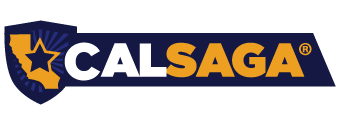Back to Business: Prepping Security Guards for the Return-to-Office Movement
Gamble Cuce, The Brownyard Group
The return-to-work debate has dominated headlines in recent months as businesses big and small lay out requirements for their employees to return to office.
This past summer, Google was in the public eye when leadership announced that employees would be required to spend at least three days per week in the office with attendance reflected in their employee performance reviews. Similarly, Amazon leadership recently cracked down on employee in-office attendance after instating a three-day per week return to office policy. Google, Amazon and others throughout California have worked to incentivize employees to return to the in-person workplace with appealing campus-like offices, attractive community spaces and even offering discounts on nearby overnight accommodations for those who may not live nearby.
What does all this mean for the security guards who may be new to the site or may have been working in a largely empty office building? With this shift, private security roles will likely be in higher demand as companies look to safeguard their properties and protect employees. Security guard firms will have to be ready for this increase.
The Risk Factor
Given the impact of the pandemic, the great resignation and ongoing staffing struggles in the private security industry, many guards are fairly new to security. As demand for security services increases alongside the return-to-work movement, even seasoned guards could be facing unfamiliar territory as their job descriptions change.
With new guards on the scene and new ground for industry veterans to cover, come new risk exposures for security firms to consider. Some of those risks might include:
- Exposure to Elements: Despite many office buildings offering protection from the weather, there is always the risk for security guards to be injured or fall ill due to exposure to the elements. If a guard does not know the new territory well, it is possible that they may get locked out of the building or get lost and not be able to find their way back to the guard station, risking dangerous exposure to the elements and suffering injuries such as heat stroke or frostbite as a consequence.
- Location Management: A major portion of any security guard’s role is managing the location they are guarding to ensure fulfillment of contractual obligations. Such obligations may include protecting employees from risk, preventing thieves or vandals from accessing the property, preventing loss from internal thieves and more. If a guard is unfamiliar with the physical territory they are assigned to, they run the risk of failing to properly manage and secure the property and potentially cause a security breach. Alternatively, if a guard does not know the schedules of individuals who work on a hybrid basis, they may mistakenly give an individual access to the building who should not have it, or they may accuse an individual of a crime they did not commit.
Regardless of the risk, it is important for security guards, both new and seasoned, to familiarize themselves with a new property or territory when they are assigned a new client. Additionally, when securing a business office or park that operates on a hybrid schedule, all security guards should be familiar with the schedule and understand who has access to the building and when.
Best Practices to Consider
To protect security guards and firms from risks related to a return-to-work and more, security firm leadership should prioritize risk mitigation and training. These best practices offer a good start:
- Training & Resources: Training is a security guard’s greatest asset. Throughout their career, a security guard should undergo regular training and refresher courses to ensure they are always up to date. Whether a security guard has been in the industry for 20 years or two months, they should be required to complete training that covers communication, patrol methods, emergency response and more. A portion of their training should be related specifically to the locations a guard will be expected to secure. Security firms can access resources to build customized training programs such as those provided by risk management partners. To ensure programs are compliant with safety standards, they can confirm with organizations like the U.S. Occupational Safety and Health Administration (OSHA). An insurance professional who specializes in the security industry can also be a great resource in ensuring training programs are effective and cover the right liabilities.
- Get familiar: A smart way for security guards to familiarize themselves with a new territory is to walk through the property several times with a keen eye. Security firm leadership should ensure all guards map out a new property before they begin watching over it. New hires should also go through a period where they are accompanied by an experienced guard or trainer who can teach them what to look out for and what to make note of in a walkthrough.
- Consider a triage nurse: The security industry can be dangerous and that, coupled with general risks, such as trips and falls, presents a case for security firms to consider exploring nurse triage programs. Whether through an onsite professional or a service provider, nurse triage programs provide a registered nurse on call for security guards who are injured. Such services encourage that proper protocols are followed which help with quick response times in an emergency. By recording injuries in real time, taking statements and recommending care, security firm leaders can rest assured that events are to be recorded and reported properly. Ultimately, nurse triage programs can reduce the likelihood that claims will spiral into costly litigation.
As more businesses require their employees to return to work, security firms have an opportunity to review their safeguarding methods before returning their guards to the recently repopulated buildings, campus spaces and other areas. To truly take advantage of these opportunities, security firm leaders should ensure their guards are prepared for the challenge and equipped with the tools to safely succeed.
 Gamble Cuce is program manager for workers’ compensation at the Brownyard Group, which administers an industry leading insurance program for security professionals. Gamble can be reached at GCuce@brownyard.com.
Gamble Cuce is program manager for workers’ compensation at the Brownyard Group, which administers an industry leading insurance program for security professionals. Gamble can be reached at GCuce@brownyard.com.






